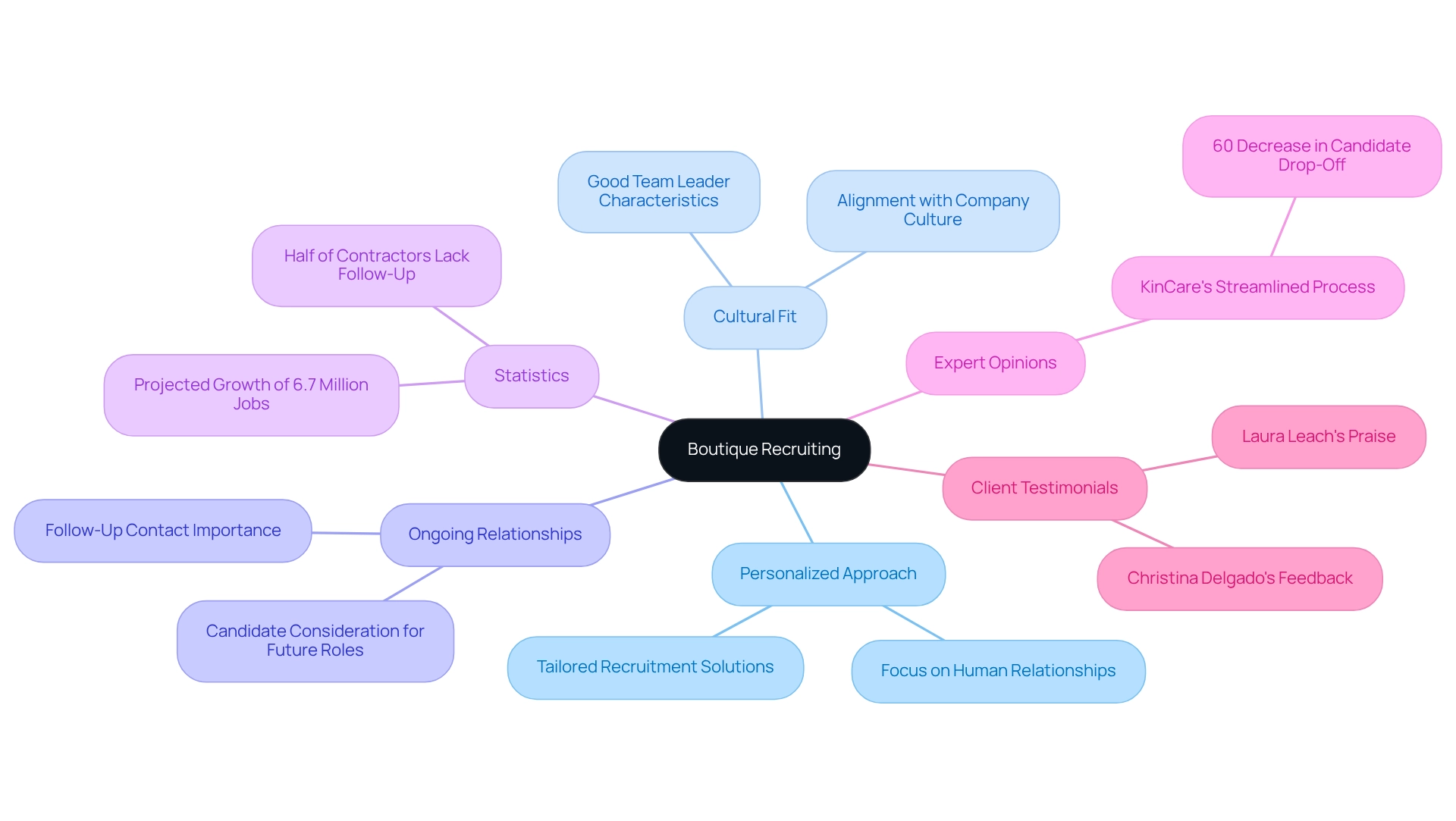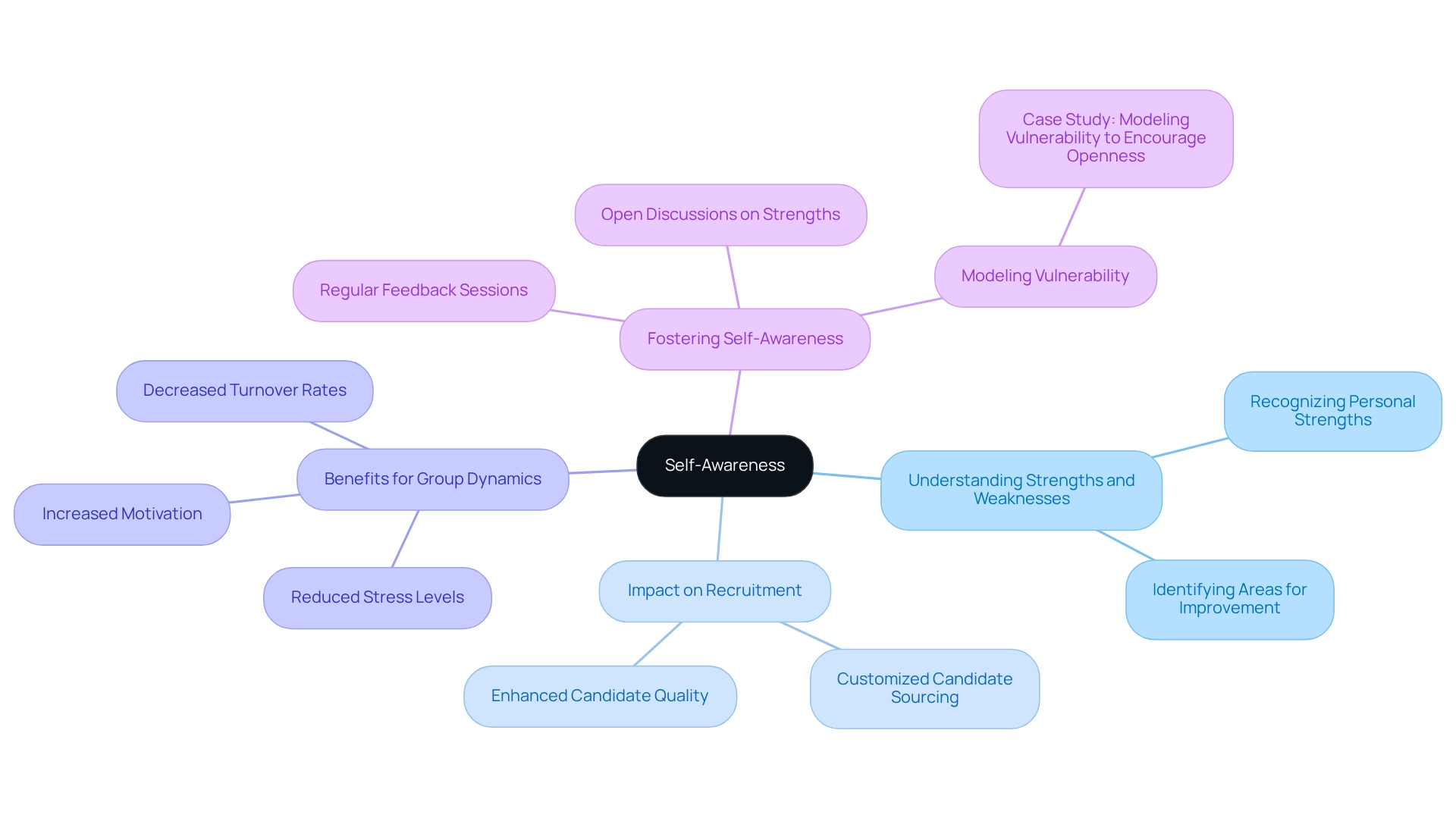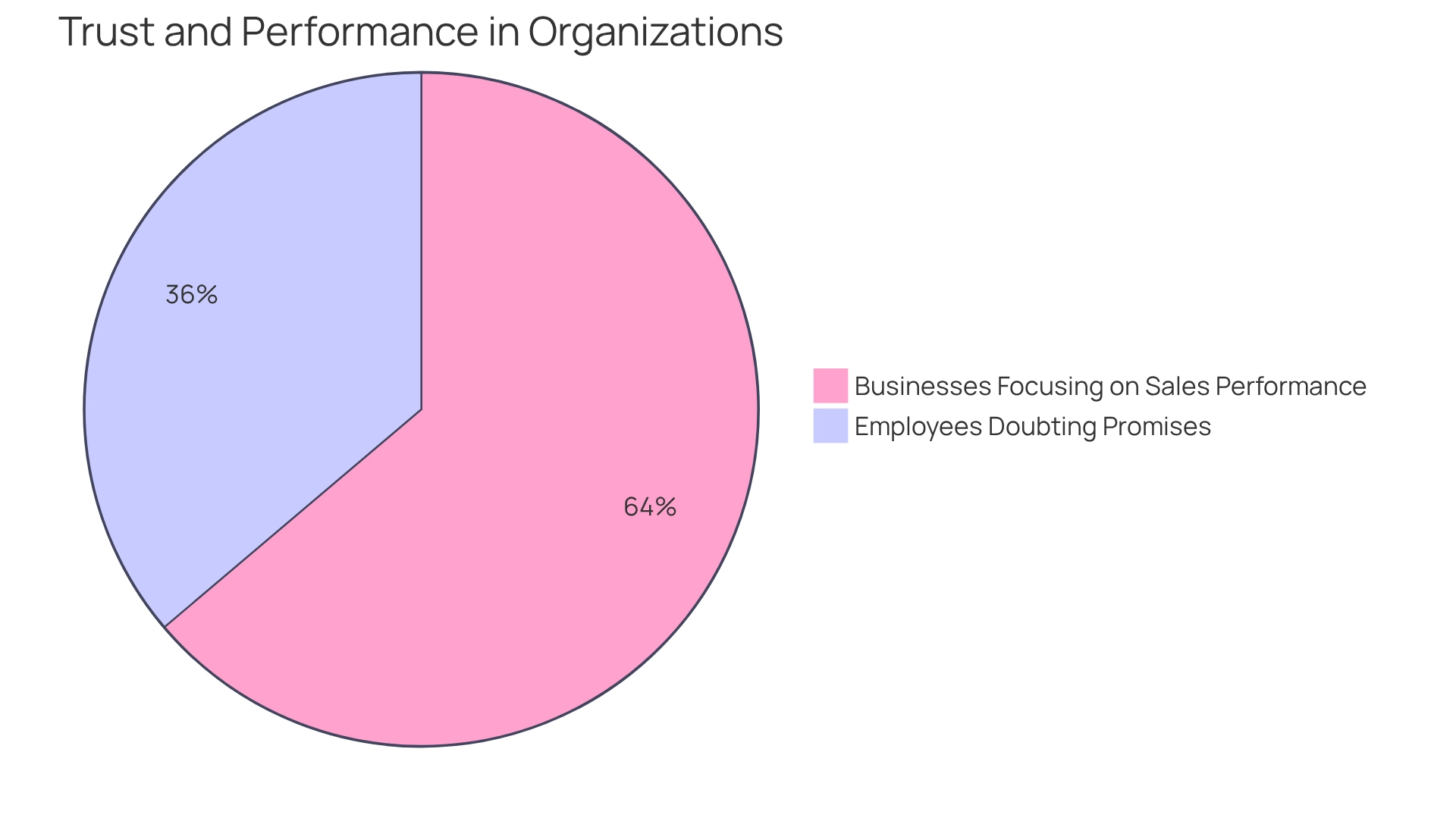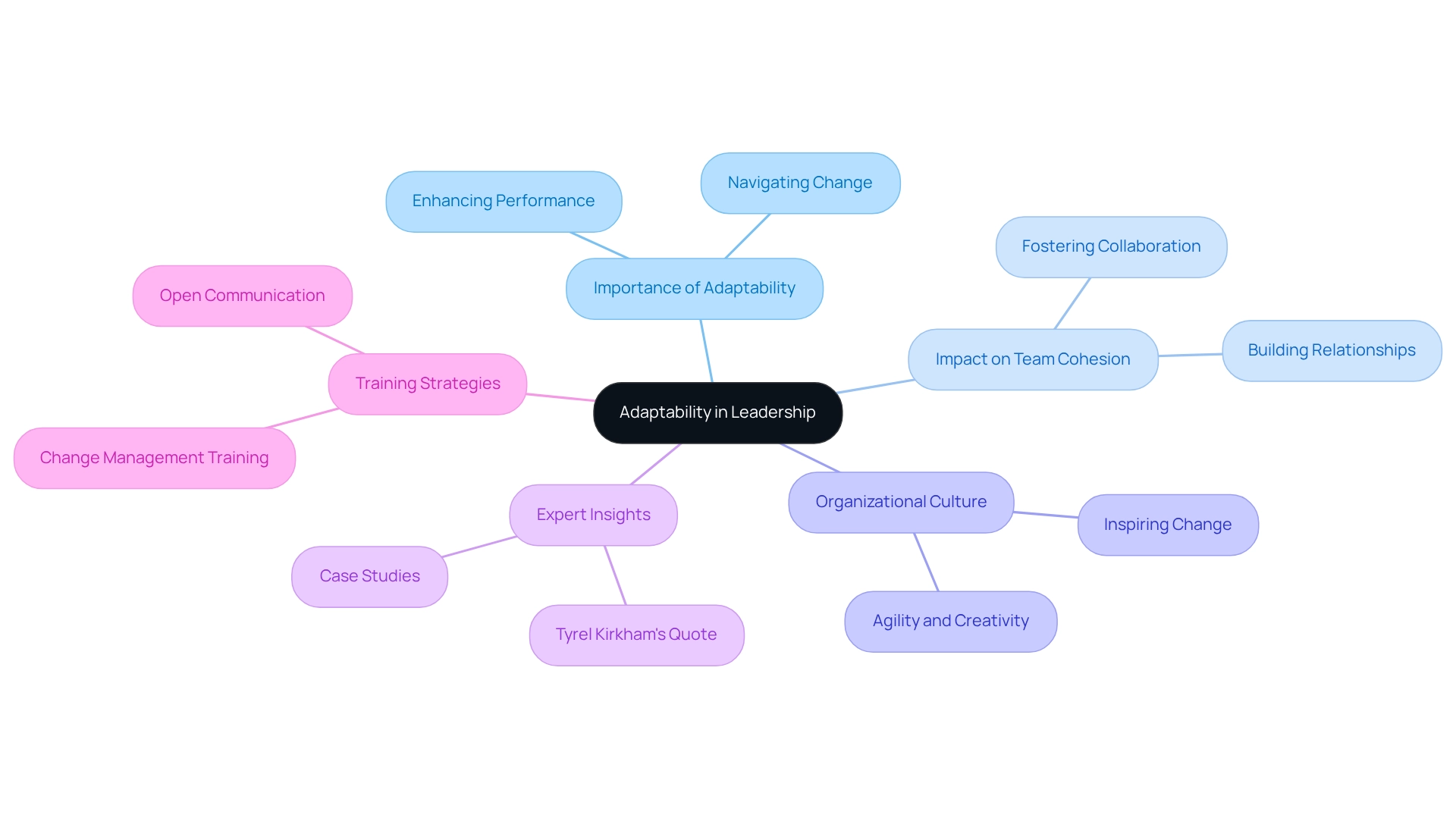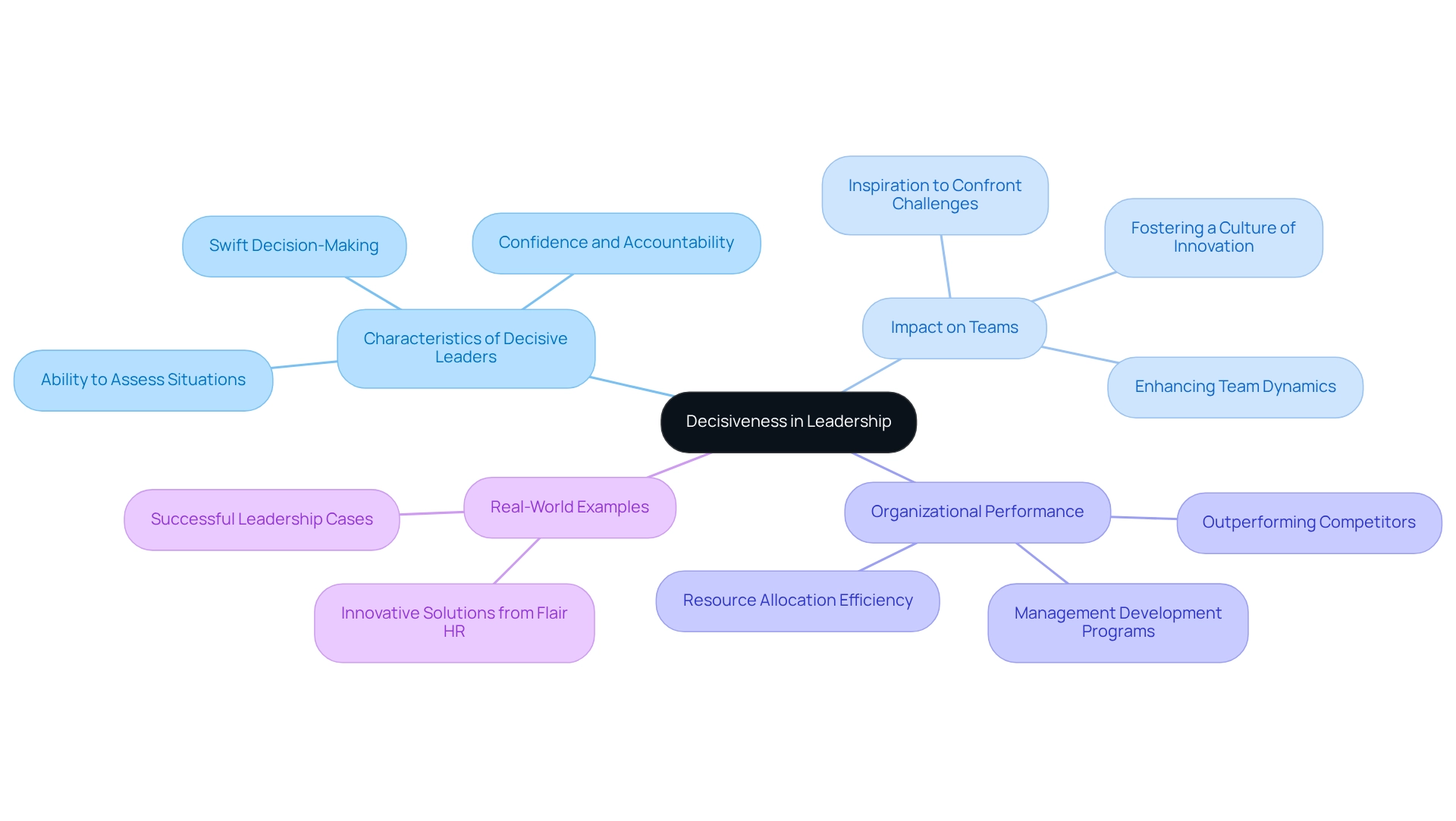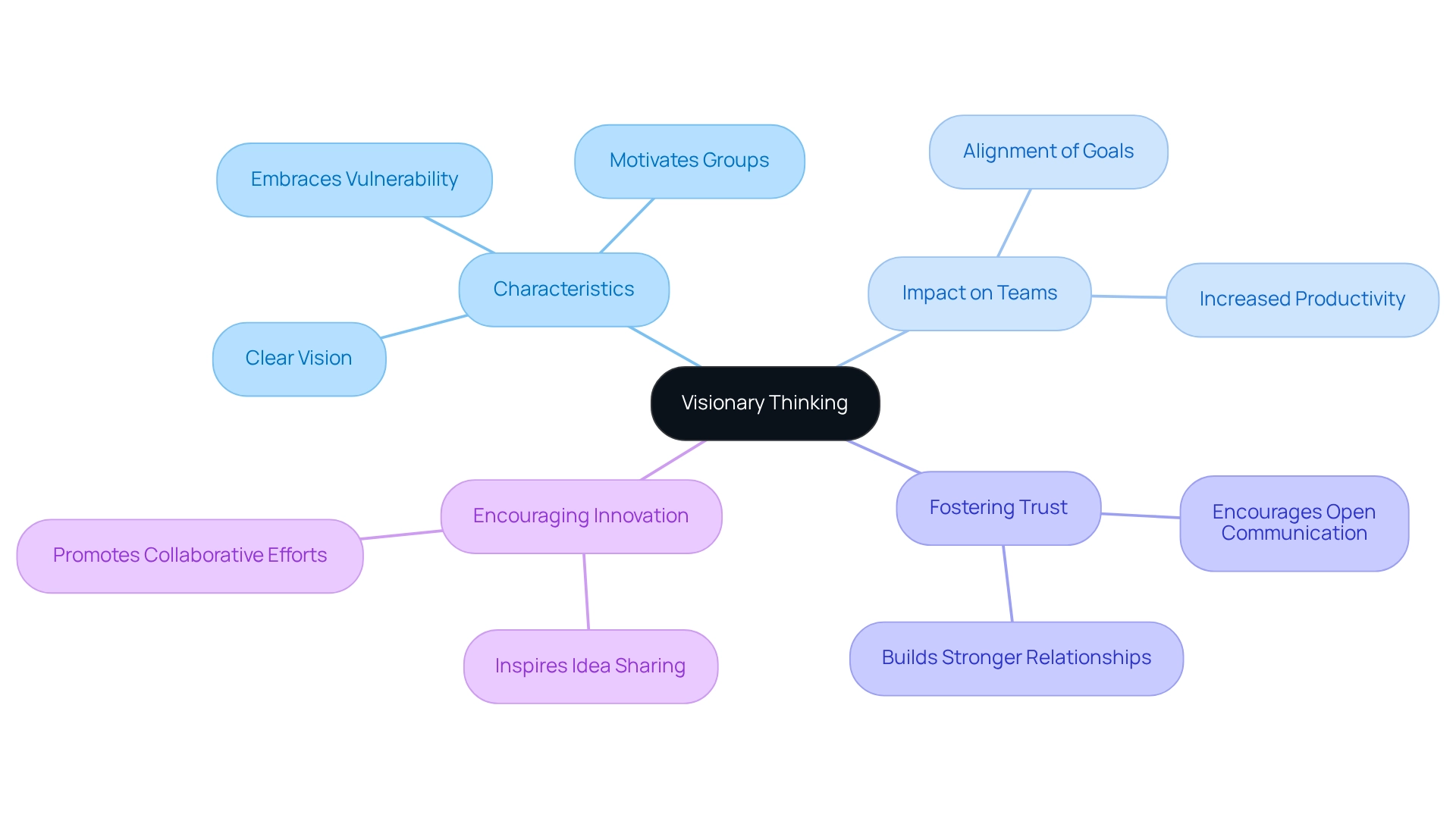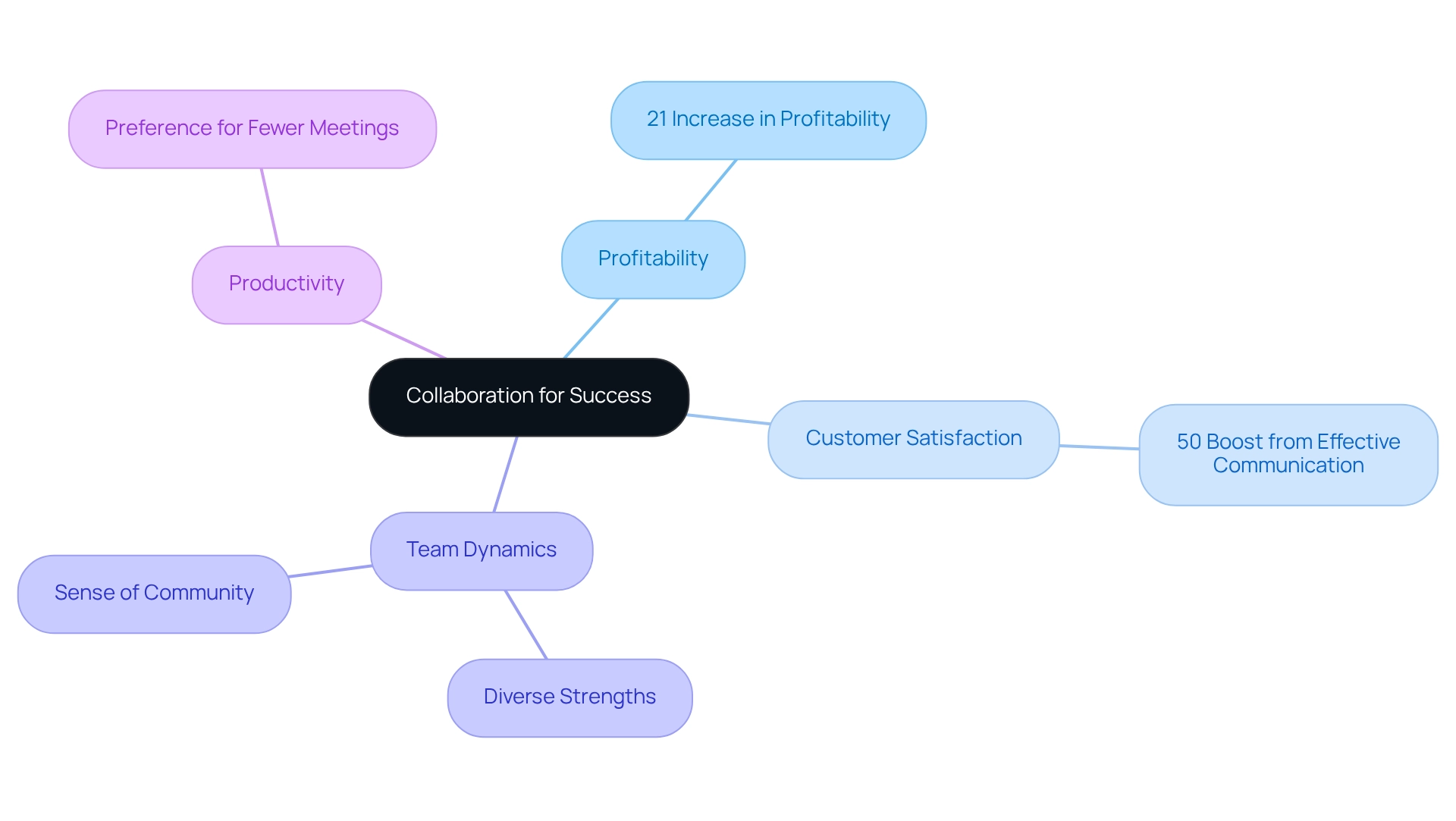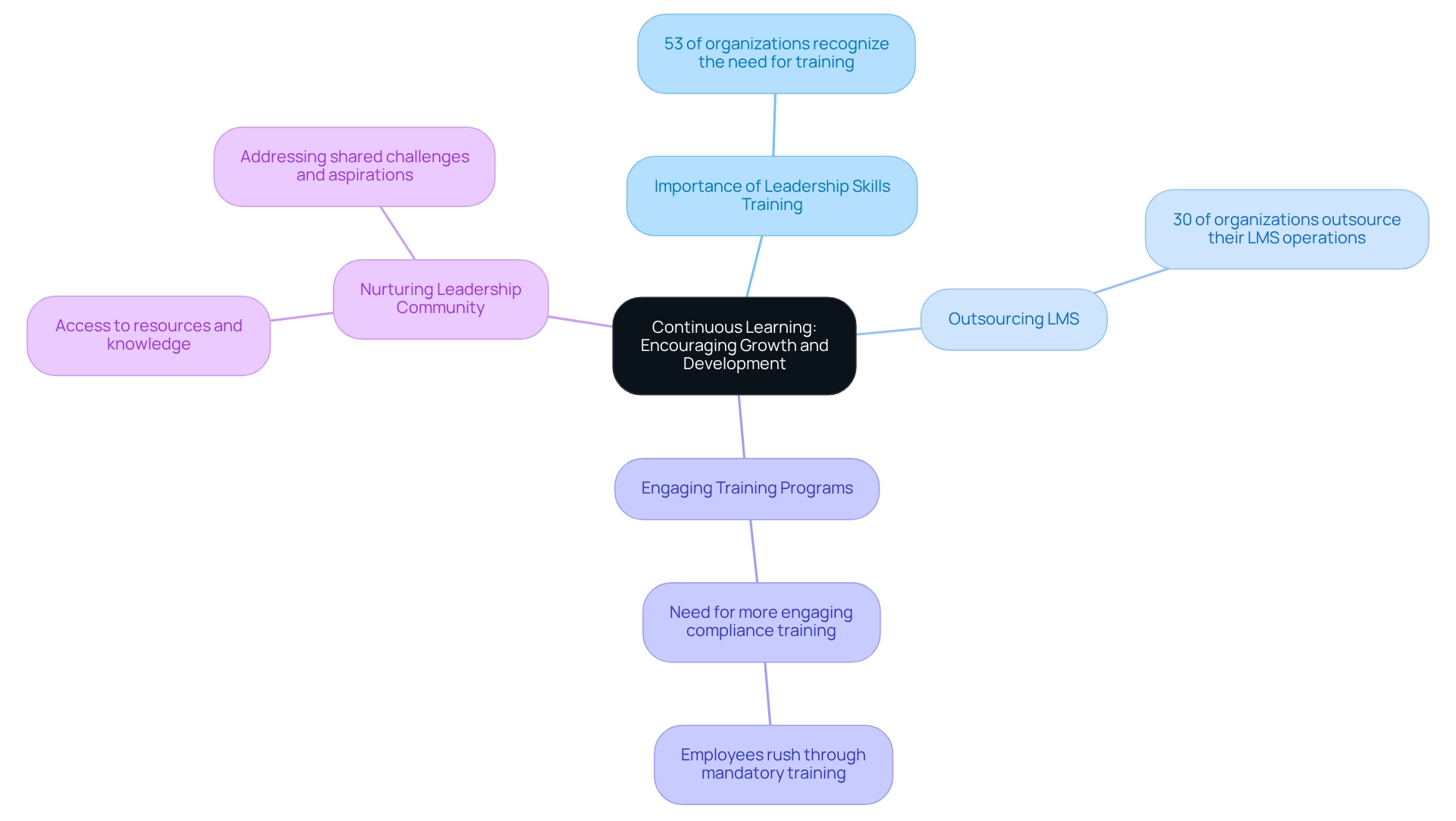Overview
The article delineates ten essential characteristics of effective team leaders:
- Self-awareness
- Effective communication
- Integrity
- Adaptability
- Empathy
- Decisiveness
- Visionary thinking
- Collaboration
- Continuous learning
Each characteristic is substantiated by compelling evidence that illustrates how it cultivates trust, enhances team dynamics, and propels organizational success. This highlights the critical role these traits play in developing effective leadership.
Key Highlights:
- Boutique Recruiting focuses on personalized talent acquisition, ensuring candidates align with company culture for effective leadership.
- Statistics show that half of contractors not placed after assignments do not receive follow-up contact, highlighting the need for ongoing candidate relationships.
- The U.S. job market is projected to grow by 6.7 million jobs from 2023 to 2033, particularly in healthcare and social assistance, creating opportunities for tailored recruitment strategies.
- A streamlined application process can reduce candidate drop-off by 60%, enhancing the quality of placements.
- Self-awareness in leaders fosters a culture of openness, reduces stress, and enhances team dynamics.
- Effective communication is crucial for leaders to articulate vision, engage teams, and build trust.
- Integrity in leadership promotes trust and accountability, essential for collaboration and operational success.
- Adaptability allows leaders to navigate change and foster resilience within teams, enhancing overall performance.
- Empathy is vital for connecting with team members, improving morale, and driving engagement and productivity.
- Decisiveness empowers leaders to make timely decisions, enhancing accountability and organizational performance.
- Visionary thinking inspires teams by aligning personal and organizational goals, driving engagement and innovation.
- Collaboration enhances problem-solving and creativity, leading to higher profitability and customer satisfaction.
- Continuous learning encourages personal and professional growth, essential for effective leadership and team development.
Introduction
In the dynamic realm of recruitment, the rise of Boutique Recruiting represents a transformative shift towards personalized talent acquisition, emphasizing the intricate connection between candidates and company culture. This approach transcends traditional hiring practices by prioritizing the human element, which is essential for cultivating effective leadership.
As organizations navigate the complexities of aligning the right talent with their unique environments, the focus on fostering lasting relationships and understanding individual strengths becomes crucial. With a projected increase in job opportunities, particularly in sectors such as healthcare, the urgency for tailored recruitment strategies is more pronounced than ever.
By nurturing a culture of empathy, integrity, and adaptability, Boutique Recruiting positions itself as a key player in the pursuit of exceptional leadership, ultimately redefining the landscape of talent acquisition.
Boutique Recruiting: Personalized Talent Acquisition for Effective Leadership
Boutique Recruiting distinguishes itself in the recruitment landscape by prioritizing a personalized approach that connects high-quality candidates with employers. This strategy transcends mere evaluation of abilities; it ensures candidates align with the company culture, a critical component for effective management. By emphasizing human relationships over numerical indicators, Boutique Recruiting significantly increases the likelihood of successful placements, cultivating environments where capable leaders can flourish.
The importance of this approach is underscored by recent statistics indicating that half of contractors not placed after an assignment never receive follow-up contact for new roles. This gap highlights the necessity for recruitment firms to maintain ongoing relationships with candidates, ensuring they are considered for future opportunities—an essential factor in fostering effective management.
Moreover, the projected growth of 6.7 million jobs in the U.S. from 2023 to 2033, particularly within the healthcare and social assistance sectors, presents a unique opportunity for recruitment agencies to concentrate on personalized talent acquisition strategies. By aligning their efforts with sectors experiencing heightened demand, Boutique Recruiting can adeptly respond to the evolving needs of employers seeking strong candidates for management roles.
Expert opinions further reinforce the significance of this personalized approach. For instance, KinCare’s experience illustrates that a streamlined application process resulted in a 60% decrease in candidate drop-off, leading to the recruitment of higher-quality candidates. This exemplifies how Boutique Recruiting’s commitment to understanding both the technical qualifications and the cultural fit of candidates can enhance organizational success.
Testimonials from satisfied clients further underscore Boutique Recruiting’s effectiveness. Christina Delgado, a Senior Talent Acquisition Specialist, remarked, “I know I can always count on top quality candidates,” highlighting the firm’s dedication to quality placements. Similarly, Laura Leach from Trinity Financial Services praised the team’s responsiveness and ability to identify candidates that align with both skill set and character, which are considered good team leader characteristics and essential for strong management.
Ultimately, Boutique Recruiting’s focus on nurturing lasting connections and providing tailored recruitment solutions positions it as a trusted partner for businesses aiming to cultivate effective management and good team leader characteristics through strategic talent acquisition. Financial Firm HR Managers can take actionable steps by adopting similar personalized recruitment strategies to enhance their leadership hiring processes.
Self-Awareness: Understanding Strengths and Weaknesses
Self-Awareness: Understanding Strengths and Weaknesses
Effective individuals demonstrate a profound level of self-awareness, enabling them to recognize their strengths and weaknesses. This insight allows them to capitalize on their strengths while actively seeking support in areas where they may lack proficiency. In the context of recruitment, self-aware individuals can better recognize the qualities they require in candidates for positions like Chief of Staff or Project Manager, ensuring a more customized approach to sourcing top-notch talent.
But why is self-awareness so crucial in the recruitment process? Individuals who possess self-awareness foster a culture of openness and growth within their groups, inspiring members to engage in self-reflection and personal development. Research indicates that working alongside self-aware colleagues can significantly reduce stress, enhance motivation, and decrease turnover rates. Conversely, working with unaware colleagues can lead to increased stress and decreased job satisfaction. Moreover, organizations that emphasize self-awareness in guidance have reported enhanced group dynamics and performance.
Consider the case study titled ‘Modeling Vulnerability to Encourage Openness.’ It illustrates how individuals in positions of authority who share their own challenges foster an environment where participants feel safe to express their struggles. This leads to genuine interactions and improved collaboration. This method not only enhances group connections but also boosts overall performance, emphasizing the crucial role of self-awareness in effective guidance.
To foster self-awareness within your guiding groups, consider implementing regular feedback sessions and promoting open discussions about personal strengths and areas for development. This practice not only improves group dynamics but also enhances the recruitment process by ensuring that supervisors are prepared to recognize and develop the right talent for their organizations. Are you ready to elevate your recruitment strategy through self-awareness?
Effective Communication: Conveying Vision and Engaging Teams
Effective communication is one of the good team leader characteristics, standing as a cornerstone of successful guidance and empowering individuals to articulate their vision and engage their groups effectively. This encompasses not only the dissemination of information but also the critical practice of actively listening to colleagues’ feedback and concerns. By fostering an environment of open communication, good team leader characteristics can help cultivate trust and cooperation—essential elements for aligning teams with shared goals.
Furthermore, regular check-ins with team members can enhance this dynamic, which reflects good team leader characteristics by mitigating feelings of overwhelm and ensuring that everyone feels heard and valued. The significance of communication in leadership is underscored by the necessity for clarity and consistency. Misunderstandings often stem from misinterpretations, illustrated by the debunking of the Mehrabian myth, which falsely suggested that 93% of communication is nonverbal.
This underscores the imperative for leaders to convey messages accurately and grasp the nuances of communication dynamics, which are essential good team leader characteristics, as they not only articulate their vision but also engage their groups through thoughtful dialogue and feedback mechanisms. As Eric Eddy aptly noted, ‘Boutique Recruiting has the capability to provide high-quality candidates swiftly and efficiently,’ showcasing how robust communication can lead to successful outcomes.
This approach not only enhances team engagement but also propels organizational success, highlighting good team leader characteristics that position leaders as trusted figures within their teams. As the communication landscape continues to evolve, those prioritizing effective communication will be better equipped to navigate challenges and foster a productive work environment.
Integrity: Building Trust and Accountability
Integrity in leadership is characterized by honesty, transparency, and accountability. Leaders who exhibit good team leader characteristics not only inspire trust among their group members but also cultivate an environment where individuals feel secure in sharing their ideas and concerns. This foundational trust is essential for promoting collaboration and ensuring that group members exhibit good team leader characteristics while remaining committed to shared objectives.
The influence of integrity on group trust cannot be overstated. Research indicates that 38% of employees doubt their colleagues’ ability to keep promises, which can significantly hinder organizational performance. This lack of trust can lead to misunderstandings and decreased morale, ultimately affecting team dynamics. In contrast, individuals who emphasize integrity and possess good team leader characteristics foster a culture of adherence, which is essential for operational success. Organizations that foster such a culture are better equipped to achieve their goals and mitigate risks associated with unethical behavior.
Instances are plentiful of individuals who have effectively established trust through integrity. By consistently exhibiting ethical conduct and making choices that align with organizational values, these leaders establish a tone that resonates throughout their groups. This approach not only enhances team cohesion but also reinforces accountability, reflecting good team leader characteristics, as team members are more likely to hold themselves and each other accountable in a trustworthy environment.
Peter Drucker aptly noted, “By themselves character and integrity do not accomplish anything. But their absence faults everything else.” This emphasizes that integrity is not just a characteristic but one of the good team leader characteristics essential for successful guidance. As organizations increasingly focus on enhancing performance—67% of businesses are currently prioritizing sales performance—integrity remains a cornerstone of successful management strategies. Leaders who embody good team leader characteristics, such as integrity, are essential in driving these performance improvements, as they foster an environment where trust and accountability thrive.
In 2025, the conversation around integrity in leadership continues to evolve, with experts emphasizing its role in shaping organizational culture and direction. The case study titled “Creating a Culture of Compliance” illustrates that organizations cultivating a culture of integrity are better positioned to achieve their goals and mitigate risks associated with unethical behavior. Leaders who operate with integrity demonstrate good team leader characteristics by strengthening trust among their groups and fostering a more accountable and engaged workforce, ultimately leading to improved results for their organizations. HR managers are encouraged to implement integrity-focused practices within their teams to foster a culture of trust and accountability.
Adaptability: Navigating Change and Challenges
In today’s fast-paced work environment, adaptability emerges as a pivotal trait for effective leadership. Leaders must swiftly pivot in response to evolving challenges—whether arising from market fluctuations, technological advancements, or internal dynamics. By embodying adaptability, those in leadership roles not only navigate transitions but also cultivate resilience and innovation within their teams. Adaptable leaders are better equipped to foster collaboration and drive organizational success. Notably, groups that embrace adaptability tend to be more cohesive and successful in achieving their objectives. This is evident in case studies where leaders prioritizing adaptability have successfully guided their teams through significant changes, thereby enhancing overall performance.
The significance of adaptability is further underscored by expert insights, suggesting that when leaders embrace change, they inspire their teams to do the same. This ripple effect can lead to a more agile organizational culture, capable of responding to challenges with creativity and confidence.
Statistics reveal that adaptability is not merely a soft skill; it is a critical component of effective leadership. Organizations led by adaptable leaders often outperform their competitors, as these leaders can swiftly adjust strategies to meet shifting demands. In a world where uncertainty prevails, the ability to adapt is not just advantageous—it is essential for sustained success.
To promote adaptability within your teams, consider implementing regular training sessions focused on change management and fostering open communication. This proactive strategy can empower your team members to embrace change and enhance their problem-solving capabilities.
Empathy: Fostering Connection and Support
Empathy is one of the good team leader characteristics that is essential for effective leadership, allowing individuals to genuinely understand and connect with the experiences and emotions of their group members. By fostering a culture of empathy, leaders can cultivate a supportive atmosphere where team members feel valued and understood. This connection significantly enhances group morale; a study reveals that 86% of individuals with compassionate leaders successfully navigate work-life demands, in stark contrast to only 60% who report less compassionate guidance.
Moreover, research from the University of Virginia highlights that individuals exhibit brain activity associated with personal threats when witnessing friends in dangerous situations, underscoring the profound nature of empathy and its implications for leadership. Leaders who prioritize empathy exhibit good team leader characteristics by forging stronger team connections and support, which, in turn, drives engagement and productivity. A prime example is Microsoft’s innovative approach to managing cross-border talent mobility, illustrating how compassionate leadership facilitates smoother transitions for employees, ultimately boosting satisfaction and retention of top talent. This case study emphasizes the necessity of understanding individual challenges and fostering an inclusive environment, showcasing how empathy directly contributes to positive outcomes.
Expert opinions increasingly recognize that good team leader characteristics include empathy as a foundational element of effective leadership. As Amy Danise, an editor, aptly stated, “There is nothing ‘soft’ about that.” The ability to empathize is crucial for cultivating resilient teams. By prioritizing empathy, leaders not only enhance group dynamics but also contribute to a more productive and harmonious workplace.
Decisiveness: Making Timely and Effective Decisions
Decisiveness is among the good team leader characteristics, as it empowers those in charge to make swift decisions that profoundly influence their teams and organizations. Decisive leaders possess the capability to promptly assess situations, weigh options, and act without hesitation. This proficiency not only instills confidence among team members but also fosters a culture of accountability and responsibility.
In 2025, the critical role of decisiveness in leadership has become increasingly apparent, especially as nearly half of executives express dissatisfaction with their companies’ decision-making processes. This discontent underscores the urgent need for individuals adept at navigating complex scenarios and making informed choices swiftly. Expert insights indicate that for CFOs, who frequently adopt a skeptical stance, a cohesive approach to goals and decision-making is vital for effective resource allocation. As Thomas Barwick notes, a fragmented organization complicates resource distribution, making decisiveness even more essential.
The impact of decisiveness transcends individual leaders; it significantly influences group dynamics and organizational performance. Good team leader characteristics, such as decisiveness, allow leaders to inspire their teams to confront challenges and pursue objectives with clarity. For instance, organizations that invest in management development programs focused on decisiveness tend to outperform their competitors. This highlights the importance of nurturing managerial talent, as resolute individuals enhance the success of these initiatives by fostering an environment where innovation and adaptability thrive.
Real-world examples illustrate the effectiveness of prompt decision-making. Leaders who act decisively during pivotal moments can steer their teams toward success, cultivating a culture where challenges are met with confidence. Furthermore, as the landscape of management evolves, good team leader characteristics, including the ability to make swift and impactful decisions, remain a crucial trait for any effective team leader. In this context, innovative solutions such as those offered by Flair HR can assist HR executives in refining talent management and organizational development, further underscoring the necessity for decisive leadership in today’s dynamic environment.
Visionary Thinking: Inspiring Teams Towards Common Goals
Visionary figures possess a unique ability to perceive the broader landscape and articulate a compelling vision for the future. This capability is crucial; statistics reveal that 85% of organizations acknowledge the development of guidance as essential for future success. By offering their groups a clear path, these individuals demonstrate good team leader characteristics that motivate people to work together efficiently toward common goals. This forward-thinking approach not only encourages innovation but also inspires group members to actively share their ideas and efforts.
Moreover, individuals who accept vulnerability are more inclined to uphold trust among their groups, fostering an atmosphere favorable to innovation and collaboration. Consider a case study on trust and vulnerability in management: it illustrates that individuals who display vulnerability can significantly improve group dynamics and motivation.
The influence of visionary management on group motivation is profound. Leaders who convey a clear vision exemplify good team leader characteristics by aligning their groups’ personal goals with organizational objectives, which drives engagement and productivity. As observed in numerous thriving organizations, those who embody visionary thinking not only inspire their groups but also foster a culture of shared purpose and dedication.
Instances abound of individuals who have successfully motivated their groups through visionary thinking. By expressing a clear vision and fostering contributions from group members, these leaders have effectively managed obstacles and attained outstanding outcomes. In today’s competitive environment, having good team leader characteristics, like the ability to motivate groups with a compelling vision, is essential for effective leadership.
Collaboration: Harnessing Team Strengths for Success
Successful individuals recognize that cooperation is essential for achieving group success. As Gabrielle Carpenter aptly states, “Good teamwork leads to 21% higher profitability,” underscoring the tangible benefits of collaboration. By fostering a cooperative atmosphere, leaders can harness the diverse strengths and perspectives of their group members, which not only enhances problem-solving and creativity but also cultivates a sense of community and shared purpose. Furthermore, a report by McKinsey reveals that effective communication within teams can boost customer satisfaction by as much as 50%, illustrating how internal collaboration directly impacts positive customer outcomes. In the fast-paced work environment of today, where over 85% of employees at Netflix advocate for fewer meetings, this preference highlights the necessity for streamlined collaboration to elevate productivity. Leaders who demonstrate good team leader characteristics by actively promoting collaboration and leveraging their group’s strengths are strategically positioned to navigate challenges and drive success.
Continuous Learning: Encouraging Growth and Development
Leaders who prioritize continuous learning exemplify the value of personal and professional growth, establishing a strong benchmark for those they lead. By actively encouraging group members to participate in learning opportunities, these leaders foster a culture of innovation and adaptability. This commitment not only enhances individual competencies but also strengthens the collective abilities of the group.
In fact, 53% of organizations recognize the necessity of leadership skills training, underscoring the importance of ongoing development in effective leadership. Furthermore, as organizations increasingly outsource their Learning Management System (LMS) operations—30% currently do—there is a growing recognition of the need for structured and engaging training programs.
A well-structured employee training program is essential for success, ensuring that members are equipped with the skills needed to thrive. However, case studies reveal that many employees often rush through mandatory compliance training, indicating a pressing need for more engaging methods that ensure understanding and retention.
By promoting a culture where ongoing education is appreciated, executives can greatly influence group growth, propelling both personal and corporate achievement. Moreover, becoming part of a nurturing group of leaders can offer access to information and resources that tackle common challenges and goals, further boosting the advancement and progress of both leaders and their groups.
As Eric Eddy noted, Boutique Recruiting’s ability to deliver top-notch candidates quickly and efficiently is a testament to the effectiveness of strong leadership in recruiting and team development.
Conclusion
The rise of Boutique Recruiting signifies a pivotal evolution in the recruitment landscape, emphasizing a personalized approach that aligns candidates not only with job requirements but also with company culture. This focus on human connections over mere metrics enhances the likelihood of successful placements, fostering environments where effective leadership can thrive. As the demand for specialized talent escalates, particularly in burgeoning sectors like healthcare, the importance of tailored recruitment strategies becomes increasingly evident.
Key characteristics such as:
- Self-awareness
- Effective communication
- Integrity
- Adaptability
- Empathy
- Decisiveness
- Visionary thinking
- Collaboration
- Continuous learning
emerge as critical components of effective leadership. Leaders who embody these qualities not only enhance team dynamics but also inspire trust and accountability, driving organizational success. By prioritizing these traits, organizations can cultivate a culture that supports growth, innovation, and resilience.
Ultimately, Boutique Recruiting’s emphasis on building lasting relationships and understanding individual strengths positions it as a vital partner in the quest for exceptional leadership. As businesses seek to navigate the complexities of talent acquisition, embracing personalized recruitment strategies will be crucial in attracting and retaining the leaders capable of steering their organizations toward success. In this ever-evolving landscape, the commitment to fostering meaningful connections and nurturing leadership potential will define the future of talent acquisition.
Frequently Asked Questions
How does Boutique Recruiting differentiate itself in the recruitment landscape?
Boutique Recruiting distinguishes itself by prioritizing a personalized approach that connects high-quality candidates with employers, focusing on cultural fit rather than just skills and abilities.
Why is aligning candidates with company culture important?
Aligning candidates with company culture is critical for effective management, as it increases the likelihood of successful placements and helps cultivate environments where capable leaders can thrive.
What statistics highlight the importance of maintaining relationships with candidates?
Statistics indicate that half of contractors not placed after an assignment never receive follow-up contact for new roles, emphasizing the need for recruitment firms to maintain ongoing relationships with candidates.
What job growth is projected in the U.S. from 2023 to 2033, and how does it affect recruitment?
A projected growth of 6.7 million jobs, particularly in healthcare and social assistance sectors, presents an opportunity for recruitment agencies to focus on personalized talent acquisition strategies.
How does Boutique Recruiting enhance its recruitment process?
Boutique Recruiting enhances its recruitment process by understanding both the technical qualifications and cultural fit of candidates, leading to higher-quality placements and improved organizational success.
What evidence supports the effectiveness of Boutique Recruiting’s approach?
Testimonials from clients, such as Christina Delgado and Laura Leach, highlight the firm’s ability to provide top-quality candidates and identify individuals who align with both skill sets and character.
What role does self-awareness play in recruitment?
Self-awareness allows individuals to recognize their strengths and weaknesses, enabling them to better identify the qualities needed in candidates, which leads to a more customized recruitment approach.
How does self-awareness benefit group dynamics?
Self-aware individuals foster a culture of openness and growth, reducing stress, enhancing motivation, and improving overall group dynamics and performance.
What strategies can be implemented to enhance self-awareness in teams?
Regular feedback sessions and open discussions about personal strengths and areas for development can be implemented to improve self-awareness within teams.
Why is effective communication crucial in leadership?
Effective communication is essential for articulating vision, engaging team members, and fostering trust and cooperation, which are key characteristics of good team leaders.
How can leaders ensure clarity in communication?
Leaders should convey messages accurately, understand communication dynamics, and engage in thoughtful dialogue and feedback mechanisms to avoid misunderstandings.
What impact does robust communication have on organizational success?
Robust communication enhances team engagement and organizational success, positioning leaders as trusted figures within their teams and enabling them to navigate challenges effectively.
